How to use HY-Plugins MIDI sequencer plug-in HY-SeqCollection2 (Step16 Seq)
HY-SeqCollection2It is an explanation of "Step 16 Seq" of.
It is like this.
I thought that a riff-like feeling would be more suitable than a base.
I also wrote about other Seq, so please check it out as well.
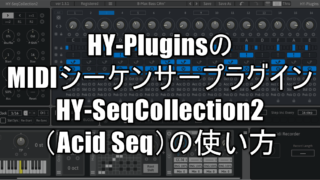
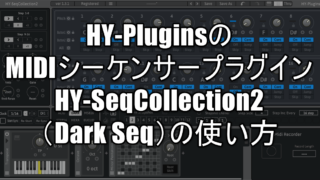
https-chilloutwithbeats-com-hy-plugins-hy-seqcollection2-m5816-seq-tutorial /
HY-Seq Collection2Is charged, but there is also a limited function version that can be used for free, so I am writing an article.
Please also read this article.
![[Free] Introduction of HY-Plugins' MIDI sequencer plug-in HY-SeqCollection2free 4 2021 08 19 01x30 10](https://chilloutwithbeats.com/wp-content/uploads/2021/08/2021-08-19_01h30_10-320x180.png)
![[Free] How to use HY-Plugins' MIDI sequencer plug-in HY-SeqCollection2free (Hexa Seq) 5 2021 08 20 02x55 15](https://chilloutwithbeats.com/wp-content/uploads/2021/08/2021-08-20_02h55_15-320x180.png)
This article will be sent with the following contents.
・ Parameter explanation of Step16 Seq
Step16 Overview of Seq
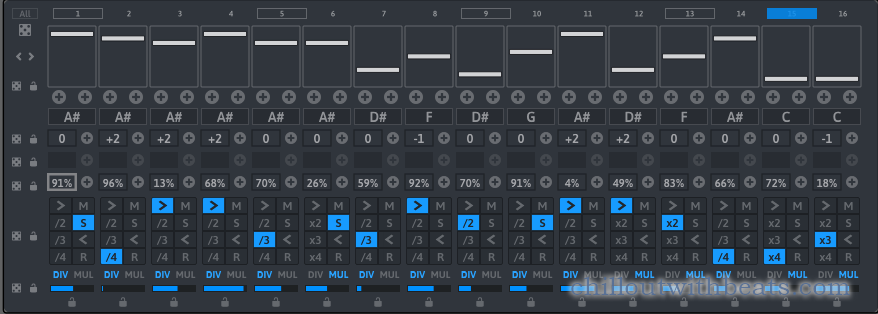
This sequencer mode is inspired by the analog solution EKG.
There was a video.
It seems that a step action can be set for each step.
Similar to "m5816-seq", it can be divided and repeated.
Step16 Seq parameter explanation
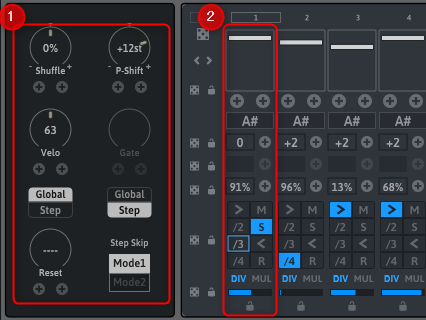
② Main Panel Parameters
① Sub Panel Parameters
Basically, there are many parts that are the same as other sequencers.

① Shuffle: Shuffle amount ± 100
It is a shuffle function.
This parameter is the same as the Acid sequencer, so the same video is reused.
(XNUMX) P-Shift: Shift of the output pitch value of the sequencer
Since the unit is semitone, + -12 is one octave up and down.
You can control the overall pitch.
If you are using "Scaler" as a MIDI effect, the MIDI effect will take precedence.
If you have set the scale, the pitch will only change in the scale scale.
Since it is the same as the M5816 sequencer, the video is reused.
If you want to change the whole thing in semitone increments, just move the MIDI effect "Tranceposer" after "Scaler".
③ Velo: Output velocity level
You can adjust the velocity when outputting with a sound source that supports velocity.
I have also written an article on velocity setting in Serum and Vital, so if you do not understand it, please read it.
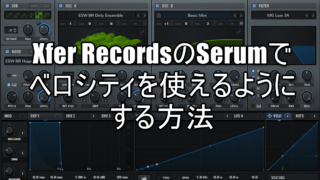
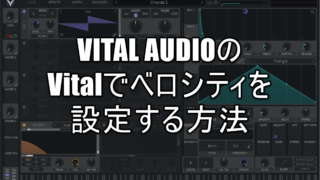
You can also select "Global" (whole) or "Step" (step unit) in "Step 16 Seq".
If you select "Step", you can set the value at each step as shown in the figure below.
Since it is the same as the M5816 sequencer, the images are reused.

④ Gate: Gate time factor 0-100
As with velocity, you can select "Global" (overall) or "Step" (step unit) in "Step 16 Seq".
If you select "Step", you can set the value at each step as shown in the figure below.
Since it is the same as the M5816 sequencer, the images are reused.

You can do something like this.
It sounded by switching in the order of "Global" and "Step" respectively.
It's the same as the M5816 sequencer, so I'm reusing videos.
This parameter alone will change the atmosphere quite a bit.
⑤ Reset: Set the reset count of the sequencer.After this count, the sequencer resumes from the first step.
This is just an explanation.
The maximum is 1024, which is the number of steps.
This parameter is the same as the Acid sequencer, so the same video is used repeatedly.
② Main Panel Parameters

① Step value shift
You can move the step left and right.
You can use it to adjust the start position when randomizing.
② Randomization of step values
If you click the "All" dice icon, you can randomize all the parameters with the dice icon in the red frame in the figure below.
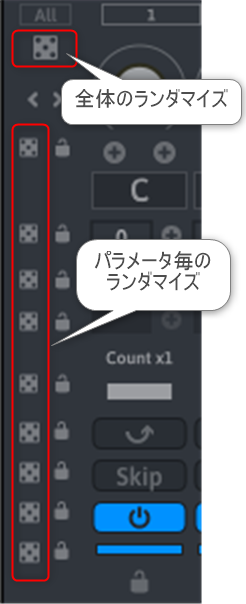
Parameters for which the lock icon is enabled (locked) are not randomized.
Once you have a good pattern to some extent, you can create a repertoire by locking and randomizing the parameters you don't want to change.
③ Step pitch (13 semitones)
This parameter is the same as the Acid sequencer, so the same video is used repeatedly.
Determines the pitch of the steps.
If you are using the MIDI effect Scaler, the Scaler setting will affect the step pitch.
If you use "Scaler", it will be forcibly changed to the sound of the scale.
You can also change the root note.
④ Step octave ± 2 octaves
You can change the octave by + -XNUMX.
⑤ Step action
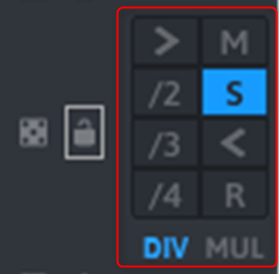
>: Normal step.Move to the next step
/ 2, / 3, / 4,, x2, x3, x4: This step is divided / repeated by a number.
It is important to note here that the total number of steps does not change because only one step is divided when dividing.
However, since the repetition repeats the same step a specified number of times, the total number of steps increases by the number of repetitions, for better or for worse.
Therefore, if you want to increase the randomness, increasing the iteration will shift the start position of the sequence.
In the video below, it is split first and then repeated.
You can see that the start sound shifts when it is repeated.
M: Mute step.This step is not triggered
S: Skip step.This step will be skipped
<: Reverse step.When you play this step, the sequencer reverses the direction of travel.
R: Restart step.The sequencer resumes from the first step.Also, this step will not play.
DIV / MUL: Switching between step division / repeat operation
⑦ Step probability
This parameter has a probability of step on / off in real time.
Since it is a probability unlike other parameters, it changes every time it is played.
If you use it a lot, it will look unnatural, so I think it's a good idea to use it for something other than the key sounds to create variations.
As one of the ways to use it, if you lower the probability after the slur, it will not sound unnatural and it will be a stretchy sound, so I thought it would be good.
⑧ Step lock
Each step can be locked so that it is not affected by randomization.
By locking the key points such as the beginning of the beat and randomizing the others, you can randomize to some extent.
Summary
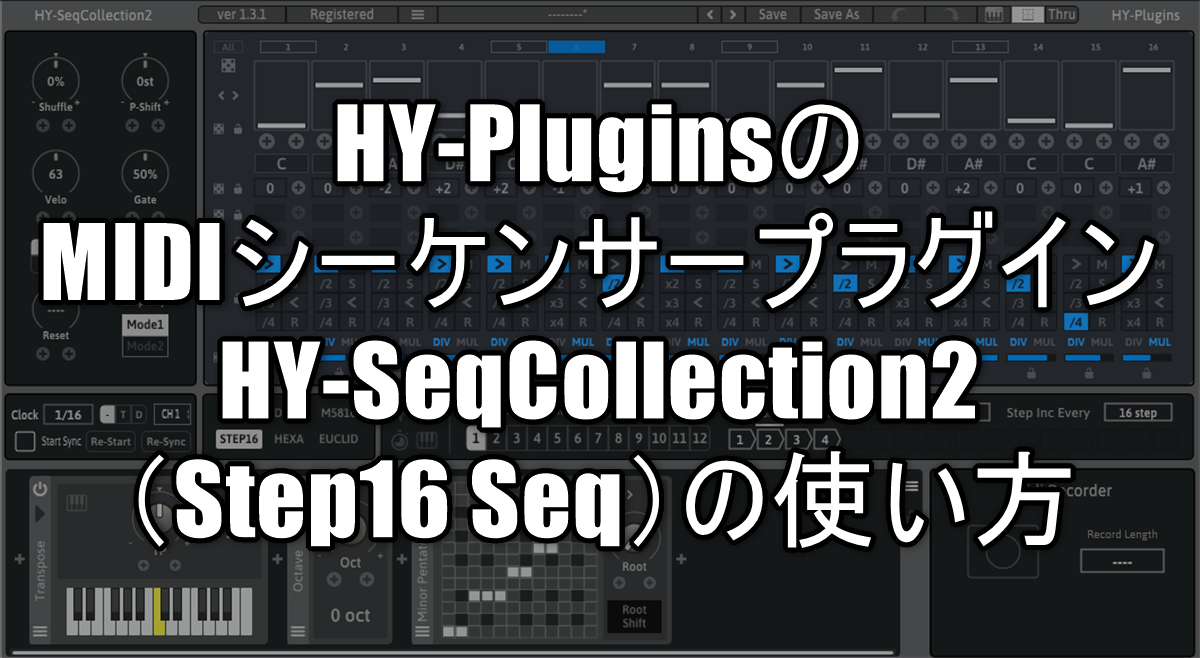

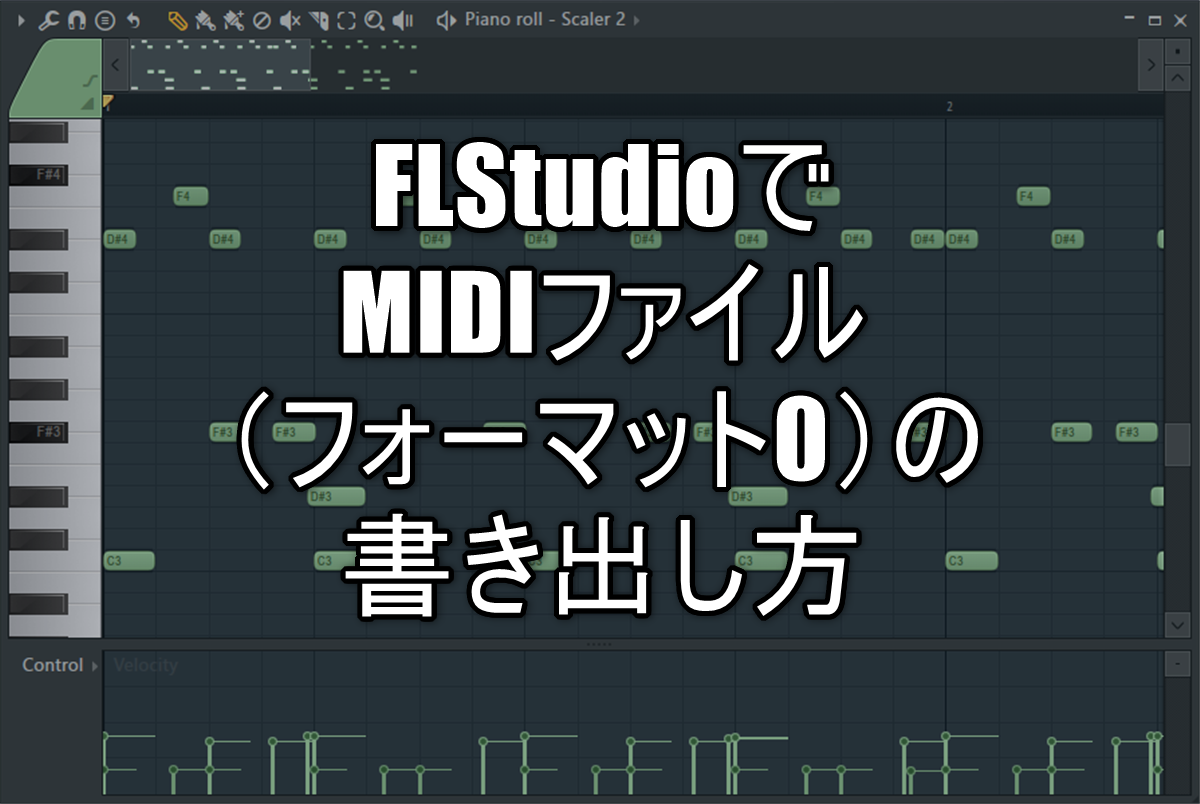
Comment